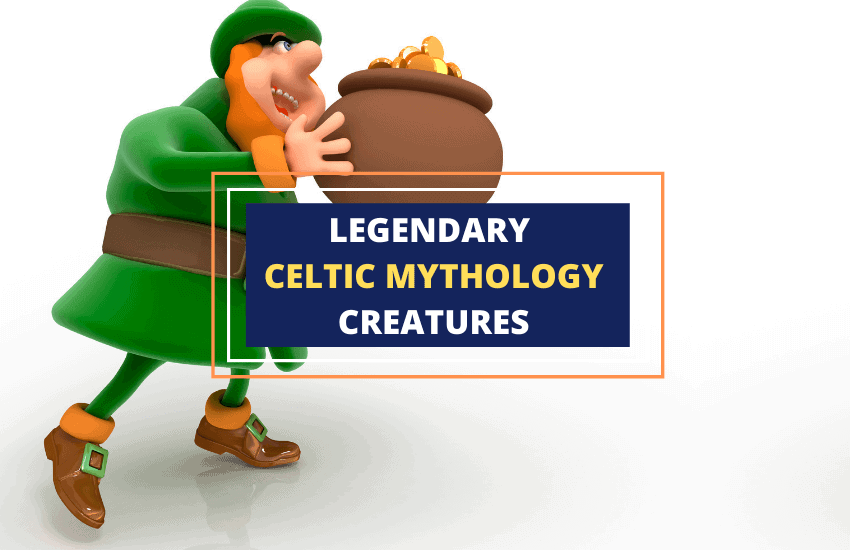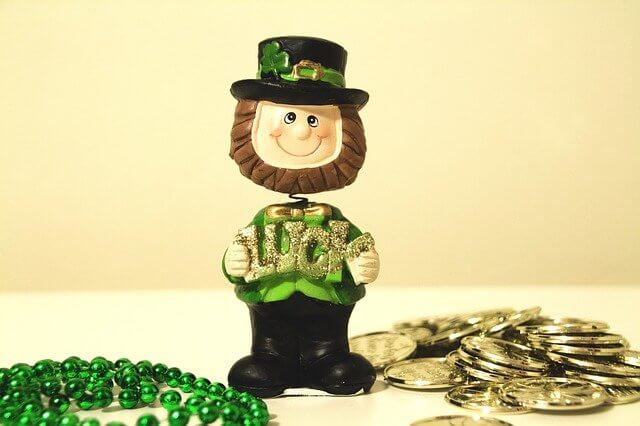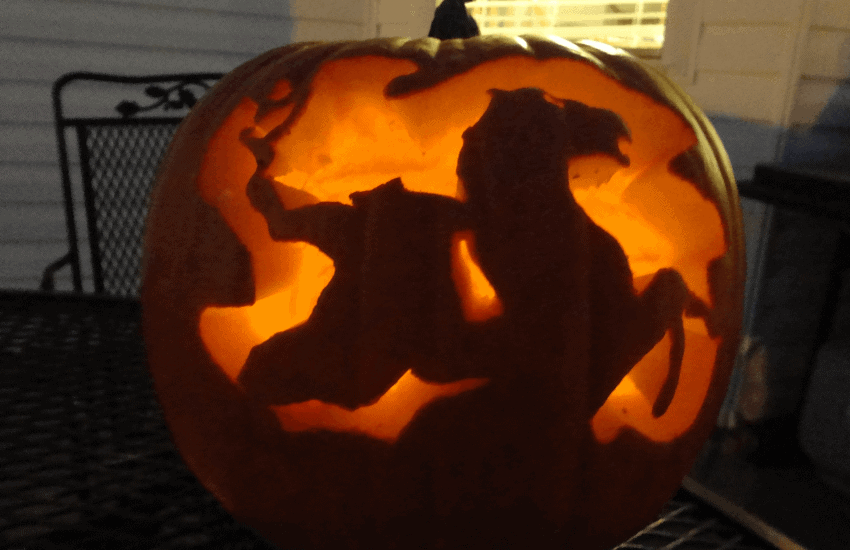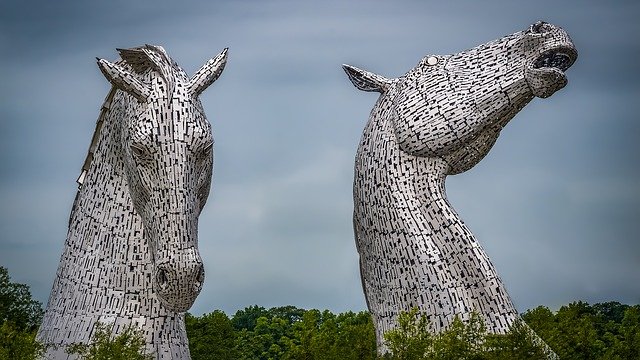
Table of Contents
There’s much of Celtic mythology that’s been lost over the ages. This culture was in its prime during the Iron age, but much of the mythology was lost due to the Roman Empire’s conquest over Europe and the various tribes of Celts that were spread across the continent.
Nevertheless, thanks to some archeological evidence, written Roman sources, and the still-surviving Celtic myths in Ireland, Wales, Scotland, and Britain, we know of quite a few beautiful Celtic myths, awesome gods, and many of the fascinating legendary creatures of Celtic mythology.
In this article, we’ll be going over some of the most legendary Celtic mythological creatures.
Legendary Celtic Mythological Creatures
Celtic mythology is so rich that even though we have access to just a fraction that has survived through the ages, that fraction still contains dozens of different unique and fantastic myths and mythological creatures. Going through all of them would take a whole book, so here we’ve listed the 14 most well-known and interesting legendary creatures in Celtic mythology.
1- The Banshee
The banshees are female spirits in Celtic mythology, that possess a powerful and chilling shriek and a ghastly appearance. Some stories portray them as old hags and others depict them as young maidens or middle-aged women. Sometimes they wear white, and other times they are adorned in grey or black.
According to some myths they are witches, according to others these female beings are ghosts. Many view them as a type of fairy, which is logical in a sense as the word banshee comes bean sidhe’ or fairy woman in Gaelic.
Regardless of what they were or looked like in any myth, their powerful screams always meant that death was just around the corner and someone close to you was about to die.
2- The Leprechaun

The Irish symbol of luck, leprechauns are probably the most famous Celtic mythological creature. Portrayed as a little person but in green, the leprechaun sports a glorious orange beard and a big green hat, usually adorned with a four-leaf clover.
The most famous myths about leprechauns claim that they have pots of gold hidden at the end of rainbows. Another interesting point about them is that if you catch a leprechaun, they can grant you three wishes to let them free – just like a genie or many other mythological creatures across different religions.
3- The Pooka
The Pooka is a different but equally terrifying mythological horse. Usually black, these mythic horses ride across the fields of Ireland at night, stampede over crops, fences, and people’s properties, they scare farm animals from producing milk or eggs for weeks, and they cause a lot of other mischief along the way.
Curiously, Pookas are also shapeshifters and can sometimes appear as black eagles or as goblins. They can also speak the human tongue and use that skill to lure travelers or farmers in the night.
4- The Merrow
The Celtic variant of mermaids, merrows have human feet instead of tails but their feet are flat and have webbed fingers to help them swim better. Just like mermaids, merrows usually live in the water.
Merrows have the ability to do so thanks to their magical clothes. Some regions say it’s a red-feathered cap that gives them their water magic, while others claim that it’s a sealskin cape. Whatever the case, a merrow can choose to abandon his or her magical clothes and live on land with humans.
Female merrows are very desirable brides as they are said to be stunningly beautiful, as well as rich because of all the treasures they’ve collected from the bottom of the sea. Merrow-men, on the other hand, are said to be hideous and ugly.
Both have a very strong desire to return to the sea when they are on land, so when someone traps them on land they usually try to hide their red-feathered hat or sealskin cape. There are quite a few Irish clans that even today claim to be descendants from merrows who came to the land centuries ago.
5- The Far Darrig
Leprechauns are not the only magical little people in Celtic mythology. The Far Darrig are just as short and also sport some stylish beards. Their beards are usually bright red, however, just like their clothes. In fact, their name translates as Red Man from Gaelic.
Unlike leprechauns, who just chill in the woods near their pots of gold, the Far Darrig roam around with giant burlap sacks, looking to kidnap people. They have a terrifying laugh and they often cause nightmares. What’s worse, when a Far Farrig kidnaps a baby, they often replace the child with a changeling – another horrible mythological creature we’ll mention below.
The one sure-fire way to deal with a Far Darring is to say out loud “You will not mock me!” before they manage to trap you.
6- Dullahan

An omen of death, just like the banshee, the Dullahan is the Irish headless horseman. Riding a black horse and covered with a black cape, the Dullahan roams the fields at night. He carries his head in one arm and a whip made out of a human spine in the other.
The Dullahan doesn’t announce the impending death by screaming, like the banshee, but by riding into a town or village and holding his head up to observe the death as it happens. Another key difference between the Dullahan and the banshee is that the headless horseman does not hesitate to harm onlookers with his whip.
7- The Abhartach
We usually associate vampires with Romania, as the inspiration of Bram Stoker’s Dracula was likely Vlad the Impaler. Another possible theory, however, is that Bram Stroker took the idea from the Irish Abhartach. Also known as The Dwarf King, the Abhartach was a magical Irish dwarf tyrant who rose from his grave after he was killed by the people.
Just like vampires, the Abhartach walked the land at night, killing folks and drinking their blood. The only way to stop him was to kill him again, and to bury him vertically and upside down.
8- Fear Gorta
The Irish version of zombies, the Fear Gorta are not your typical, dumb, brain-eating monsters. Instead, they wander around, carrying their rotting flesh from village to village, asking strangers for food. Those who weren’t repulsed by the protruding bones and blueish skin of the walking dead and gave them food, were rewarded with prosperity and wealth. Those who chased the Fear Gorta away, however, were cursed with bad luck.
In essence, the Fear Gorta myth served to teach people to always be kind and generous, even to those who seem unappealing to them.
9- The Changeling
Despite their name, the changelings are not actual shapeshifters. Instead, they are the children of fairies, such as the Far Darrig or often even adult fairies that look like babies. Not all fairy children are changelings. Some are “normal” and beautiful, and those the fairies keep for themselves.
When a deformed fairy is born, however, which apparently common for them, the fairies would steal a human child and put their deformed child in its place. This is why they are called changelings. These “replacement babies” are said to cry all day and all night, to grow into ugly and deformed people, and to cause bad luck to the adopted family. However, they’re also said to be drawn toward musical instruments and to have excellent musical skill – logical, given that they are fairies.
10- The Kelpie

The Kelpie is an evil water spirit, typically portrayed as a white horse that swims in rivers or lakes. Their origin is probably related to the foaming white waters of some fast rivers that can also be dangerous to those who try to swim in them.
The base Kelpie myth shows them as beautiful and captivating creatures that attract travelers and children by offering them a ride on their back. Once the person climbs on top of the horse, however, they get glued to the animal and the Kelpie delves deep into the water, drowning its victim.
The Kelpie myth is very common in Scotland but it also exists in Ireland.
11- Dearg Due
Another vampire myth in Celtic culture, the Dearg Due is a female demon. Her name literally translates as “Red Bloodsucker” and she’s said to lure men by seducing them in the night before biting them and sucking away their blood.
The original Dearg Due is said to have been a beautiful lord’s daughter who fell in love with a peasant. Her father frowned upon their relationship, however, and forced his daughter to marry a rich man instead. The woman’s husband was terrible to her, so she ended up committing suicide out of sorrow.
Years later, she rose from the grave and started wandering across Ireland, punishing men by taking their life force away.
12- Daoine Maithe
The Daoine Maithe are the fairy folk in Irish mythology. A general term for most fairy folk, the Daoine Maithe are usually human-like, have supernatural abilities, and are usually good and kind-hearted. Some myths say that they are the descendants of fallen angels and others that they are the children of the Tuatha De Danann, the “peoples of the goddess Danu” who first came to Ireland.
While typically good, the Daoine Maithe can become vengeful if they are mistreated by people. Unfortunately, that is not uncommon given how often people take them for Far Darrig or other malevolent creatures.
13- Leanan Sidhe
An evil cousin to the banshee or the bean sidhe, the leanan sidhe is said to be a malicious fairy or demon who seduces aspiring authors and musicians. The leanan sidhe would approach such people in their most desperate time when they are looking for inspiration. The leanan sidhe would seduce them and would offer to be their muse, fueling their creativity by using her magic.
Once those authors or musicians reached the peak of their creativity, however, the leanan sidhe would suddenly leave them, plunging them into a much deeper depression than they were in previously. Such people would then usually take their own lives. Once that happened, the leanan sidhe would come, steal their fresh corpse, and take it to her lair. There, she would drain their blood and use it to fuel her own immortality.
14- Sluagh
More ghosts rather than demons or spirits, the Sluagh are said to be the souls of dead sinners. These frightening creatures would often fly from village to village, usually in packs, going from west to east. When they encountered people, the Sluagh would instantly try to kill them and take their souls.
More often than not they would try to invade people’s homes and attack older, dying people as they were an easier score. To stop the Sluagh from invading one’s home, people usually kept their westward windows shut.
Wrapping Up
Celtic mythology is full of unique creatures, many of which have influenced modern day pop culture and are still mentioned in books, movies, video games and songs. Curious how these Celtic creatures compare to Greek, Norse or Japanese mythological creatures? Check out those lists here:
Unique Creatures of Norse Mythology








